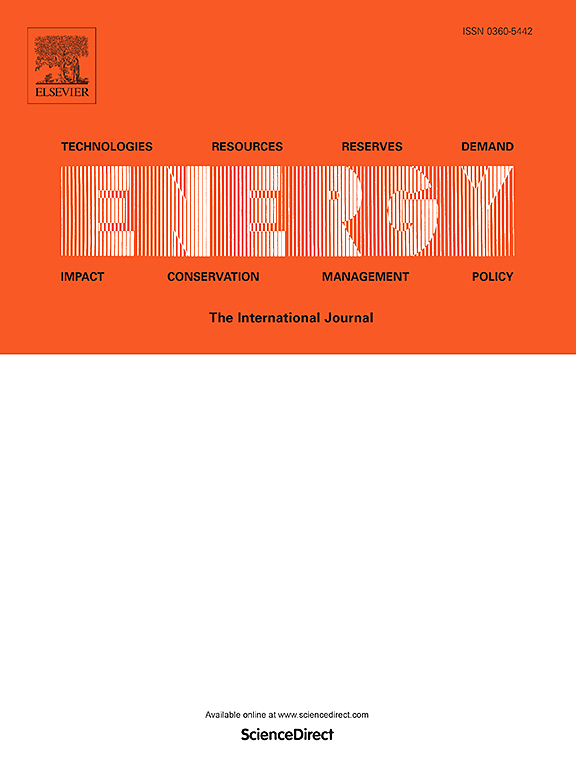Combined ultra-short-term photovoltaic power prediction based on CEEMDAN decomposition and RIME optimized AM-TCN-BiLSTM
IF 9
1区 工程技术
Q1 ENERGY & FUELS
引用次数: 0
Abstract
Photovoltaic power prediction is crucial to the stable operation of the power system. In order to further improve the accuracy of photovoltaic power prediction, a Complete Ensemble Empirical Mode Decomposition with Adaptive Noise (CEEMDAN) and Rime-ice (RIME) optimization algorithm and optimization Attention Mechanism (AM)-Time Convolutional Network (TCN)-Bidirectional Long Short-Term Memory Neural Network (BiLSTM) combined ultra-short-term photovoltaic power prediction model is proposed. First, the original power sequence is decomposed using CEEMDAN to obtain smoother data; then, for the inherent intermittency, variability, and stochasticity of PV power generation, a combined AM-TCN-BiLSTM prediction model is constructed to extract features and learn the PV power, and the RIME simulates the growth and crossover behaviors of the mistletoe-particle populations with powerful global optimization functions. The hyperparameters of the prediction model are optimized by the RIME algorithm, and the optimized hyperparameter prediction model is used to predict each subsequence obtained from the decomposition. Finally, the prediction results of each sub-sequence are integrated and reconstructed to obtain the final PV power prediction value. The simulation verification shows that the model can effectively improve the prediction accuracy compared with the comparison algorithm. In the experimental results, the MAE for the first and second predictive steps were recorded as 4.3116 and 5.0342, respectively. The RMSE values for these steps were 6.7357 and 8.5834, respectively. Additionally, the R2 showed a significant improvement, reaching 0.9879 for the first step and 0.9803 for the second step. These outcomes validate the effectiveness of the model proposed in this paper.
求助全文
约1分钟内获得全文
求助全文
来源期刊

Energy
工程技术-能源与燃料
CiteScore
15.30
自引率
14.40%
发文量
0
审稿时长
14.2 weeks
期刊介绍:
Energy is a multidisciplinary, international journal that publishes research and analysis in the field of energy engineering. Our aim is to become a leading peer-reviewed platform and a trusted source of information for energy-related topics.
The journal covers a range of areas including mechanical engineering, thermal sciences, and energy analysis. We are particularly interested in research on energy modelling, prediction, integrated energy systems, planning, and management.
Additionally, we welcome papers on energy conservation, efficiency, biomass and bioenergy, renewable energy, electricity supply and demand, energy storage, buildings, and economic and policy issues. These topics should align with our broader multidisciplinary focus.
 求助内容:
求助内容: 应助结果提醒方式:
应助结果提醒方式:


